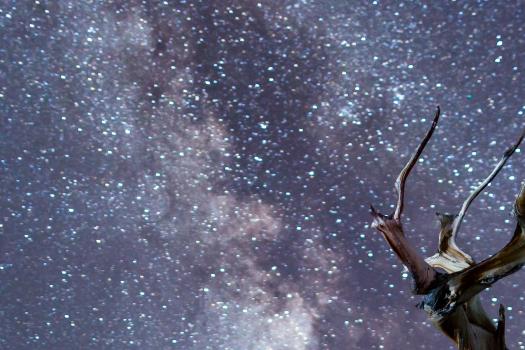Seeing my night sky
- Lesson Plan
- Feedback Form
Students will learn about natural and artificial forms of light, and how light pollution affects our view of the night sky.
3.5.1
Provide evidence showing that the sun is the source of heat and light for Earth.
Materials Needed
- Mag light
- Constellation images
- Pushpins
- Small nails
- Shoebox, either one for a class demonstration or one for each student group
Before and After homework
Seeing My Night Sky Homework 1- The day before doing this lesson prepare your kids by introducing the topic of the night sky. Ask them to go outside and think about what they can see. Can they see the moon? Can they see any constellations? Is it easy to see the stars? How does looking at the night sky make them feel?
Seeing My Night Sky Homework 2- The day after the lesson, again ask students to go outside and record their observations. Are they able to change their environment and see the sky better?
Do Ahead
- You can choose to do this as a demonstration, creating one constellation as a class. Or you can place students into groups and allow each group to create one constellation. You will need to provide one cardboard box per group.
- This activity will work best if you can darken your classroom ahead of time.
- Assign your students the ‘Seeing My Night Sky’ Homework 1 assignment.
Activity Directions
- Ask students to talk about what they saw while looking at the night sky the night before.
- Ask students to think about what the Earth was like a couple of hundred years ago at night? Was it different than today? How so? (It used to be much darker. Light at night used to come mostly from naturally occurring sources such as the moon and stars. Humans did have fire and candles for many years.)
- Ask students to list some of the light sources they spied last night that did not come from the moon or stars. List these sources of light (mechanical or electrical devices) on the board.
- Ask students what they know about constellations. If they did the Stars and Constellations activity, they may remember that: constellations are groups of stars, some of the stars in a constellation may be bigger and brighter than others, some may be closer or farther to Earth.
- Explain to students that their vision changes at night. They, and almost all mammals, are adapted to see in the dark. It takes about 20 minutes in darkness for our eyes to adjust and start to see much better. But it only takes a moment of bright light to change our vision, so we are “night blind”, meaning we see very poorly.
- Can they think of ways animals need darkness for their survival? (To hunt, to hide, to migrate, to reproduce. Students learn this in the Darkness Matters lesson.
- Tell students they are now going to make their own constellation.
- Put students into groups. Or choose to do this as a demonstration.
- Have groups decide what constellation they will make. You can use the constellation images as a guide or choose to make an “original” (made up) constellation.
- Explain to students that they will be making holes in the cardboard box to create a place for light to come through and model a star. They should draw the constellation they want to make on their box with a marker, making dots for each star. Some can be bigger stars than others, like in real constellations.
- Distribute to each group a box, markers, pushpins, and nails.
- Have students use the pushpins to make the first hole in their boxes, then use the nail to create a larger hole.
- Once students have finished making their constellation, distribute the flashlights. Place a flashlight that is on in a box and cover it. Turn off the classroom lights. Take turns viewing each students’ creation. You can keep the classroom lights off during this time.
- Keeping the classroom lights turned off decide on one constellation to use for a light pollution demonstration.
- Explain to students that their eyes have adjusted to a lower light level during this activity. (Your eyes actually take a full 20 minutes to adjust to darkness) You are now going to demonstrate how artificial (or human-created) light at night changes our view of the night sky.
- With the single constellation lit up, turn on an additional classroom light. Perhaps a desk light, or several of the flashlights outside of the boxes. Can the students still see the constellation on the ceiling? (No, with additional light the constellation is obscured. If artificial light at night is unnecessary, we call it light pollution)
- Assign Seeing My Night Sky- Homework 2 for this evening’s homework.
- Discuss with students the next day if they could see the stars better after turning all outdoor and indoor lights off. Discuss with students how seeing a dark night sky makes them feel.
| Attachment | Size |
|---|---|
| 126.15 KB | |
| 146.82 KB |

